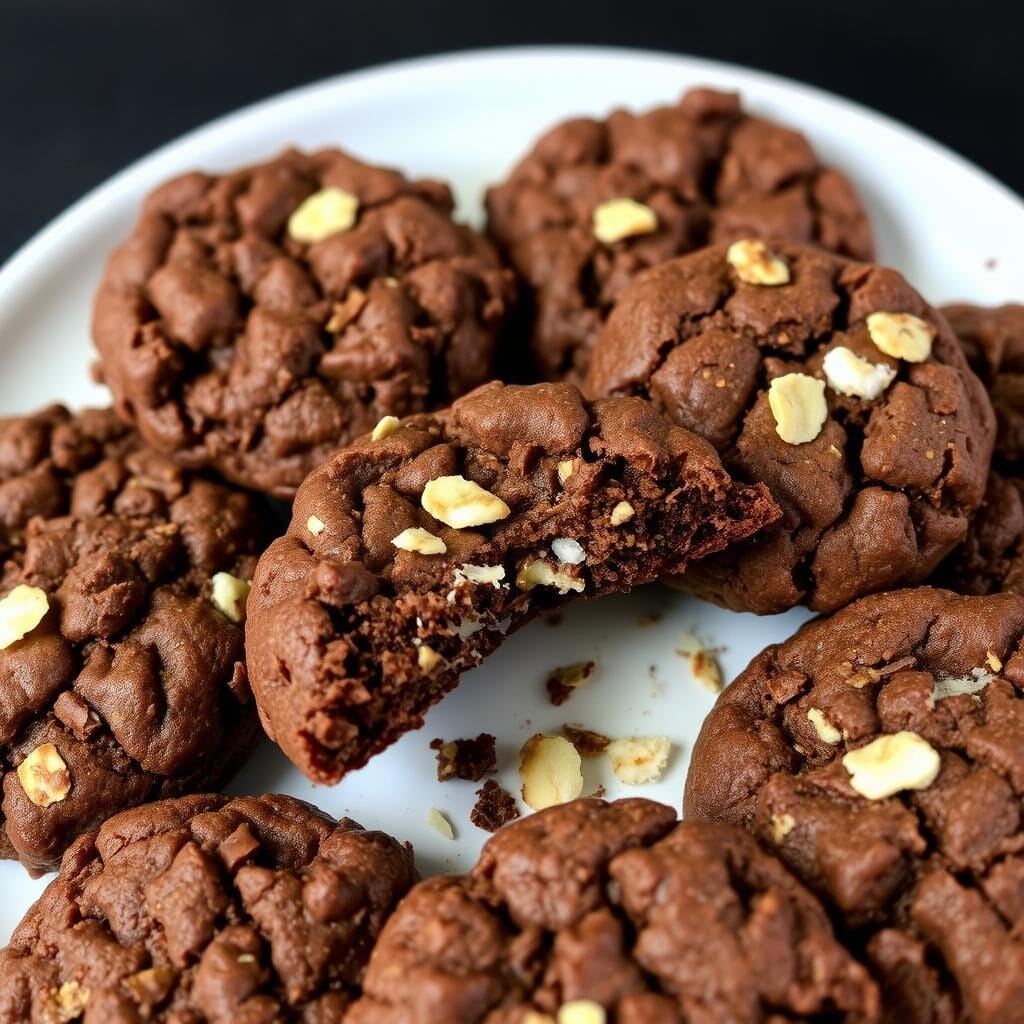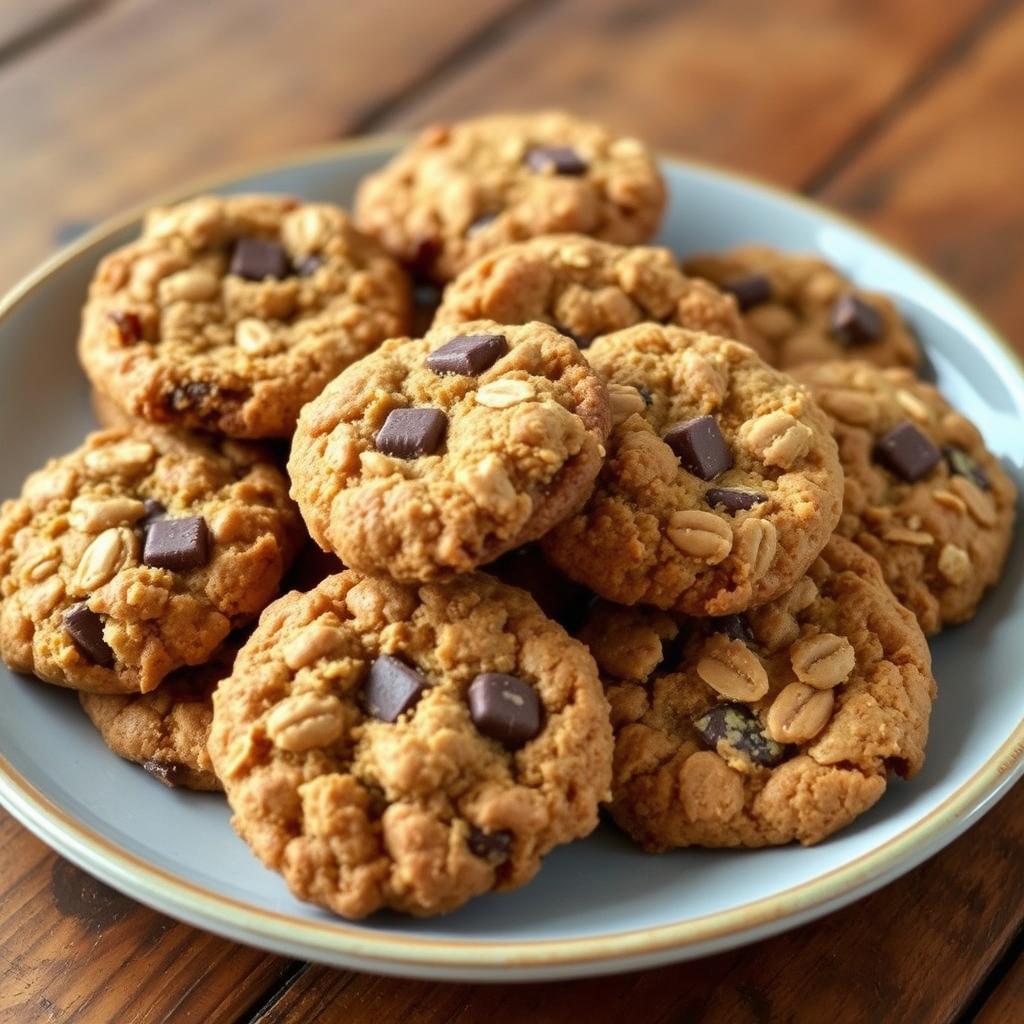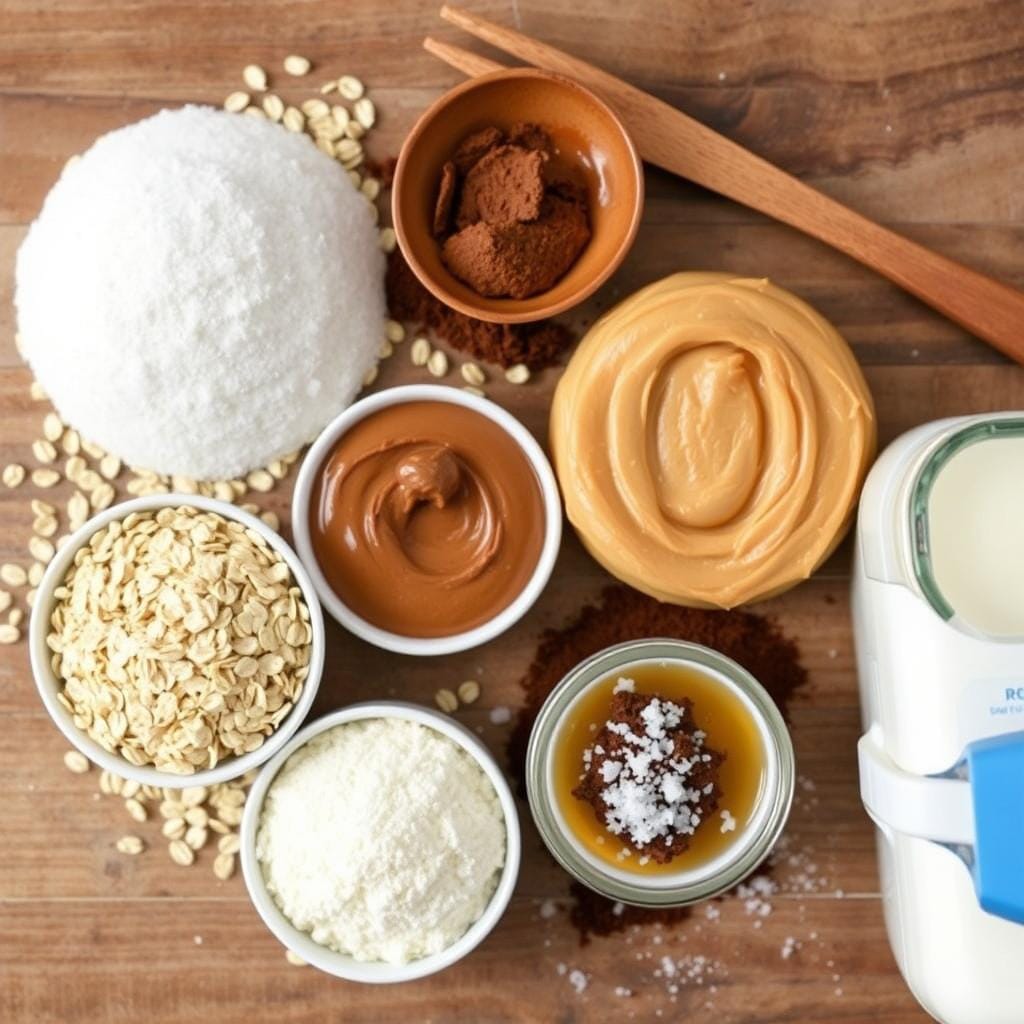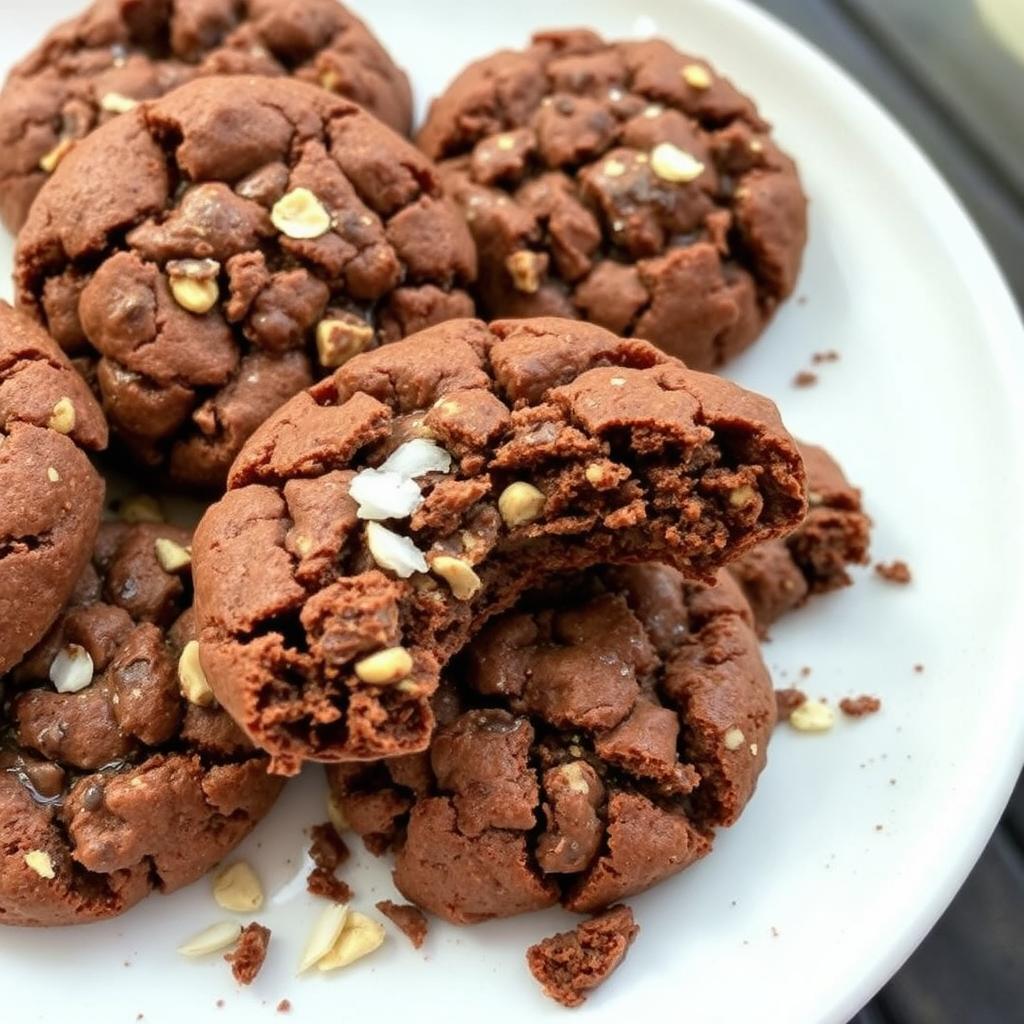Why are my no-bake cookies dry and crumbly? I love cookies, and no-bake ones are my favorite. But sometimes, they turn out dry and crumbly, which is disappointing when you’re expecting a soft, chewy treat. If you’ve had this problem, you’re not alone.
Many people struggle to make no-bake cookies just right. But the fix might be easier than you think.
Table of Contents

Key Takeaways
- Understand the science behind the ideal no-bake cookie texture
- Identify common ingredients that impact the consistency of no-bake cookies
- Learn how to troubleshoot issues like dry, crumbly no-bake cookies
- Discover the role of sugar and butter in achieving the perfect no-bake cookie
- Utilize the right equipment and tools for consistent, delicious no-bake cookies
Understanding the Perfect No-Bake Cookie Texture
Getting the perfect no-bake cookie texture is a dream for many bakers. The ideal cookie is chewy, with a mix of creaminess and crunch that feels amazing in your mouth. But what makes a cookie truly special, and how can you make it in your kitchen?
What Makes an Ideal No-Bake Cookie
An ideal no-bake cookie has a special balance. It’s not too dry or too soft. It’s chewy on the outside and moist inside. This perfect texture comes from the right mix of ingredients and how you prepare them.
The Science Behind Cookie Consistency
The science of cookie texture is all about how ingredients work together. The mix of fats, sugars, and liquids is key. Cooking time and temperature also affect the cookie’s feel.
Moisture Content and Cookie Structure
Moisture is crucial for the perfect no-bake cookie. Too much makes it soggy, too little makes it dry. Knowing how butter, milk, and nut butters affect moisture is important for the right cookie structure.
By understanding the science of no-bake cookie texture, you can make perfect chewy cookies every time. With the right ingredients and careful preparation, you’ll achieve no-bake cookie perfection.

“The perfect no-bake cookie is a delicate balance of flavors and textures, where every bite is a delightful experience.”
Common Ingredients That Affect No-Bake Cookie Texture
Choosing the right ingredients is crucial for perfect no-bake cookies. The wrong mix can turn a moist treat into a dry, crumbly mess. Knowing how each ingredient affects texture is key to fixing dry no-bake cookies and preventing crumbly no-bake treats.
Butter or its substitutes are vital in no-bake cookies. They keep the cookies moist and chewy. But too much can make them greasy and unpleasant.
The sugar ratio is also important. A mix of granulated and brown sugar, or even honey or corn syrup, is best. Too much sugar makes cookies too sweet, while too little can make them dry and brittle.
- Oats are a must in no-bake cookies. Rolled oats make them chewier, while quick-cooking oats can make them crumbly.
- Nut butters like peanut or almond butter add richness and moisture. But too much can make cookies heavy and dense.
- Dairy products like milk or cream make cookies smooth and creamy. But too much can make them soggy and wet.
Getting the right balance of these ingredients is essential. Pay attention to recipe ratios and adjust them to get the texture you want.

“The key to perfect no-bake cookies is finding the right balance of ingredients to achieve the desired texture – not too dry, not too wet, but just right.”
Why Are My No-Bake Cookies Dry and Crumbly?
If your no-bake cookies are dry and crumbly, there are a few reasons why. Let’s explore the common problems that cause this issue.
Temperature Issues During Preparation
The temperature when you make your no-bake cookies matters a lot. If it’s too hot, the ingredients can cook too much and lose moisture. This makes the cookies dry and hard.
If it’s not hot enough, the sugar and butter won’t melt well. This can make the cookies crumbly.
Incorrect Ingredient Measurements
Getting the right amounts of each ingredient is key. Too much flour or not enough milk or butter can make the cookies dry. Always follow the recipe and use the right measuring tools.
Environmental Factors
The weather and altitude where you live can affect your cookies. High humidity can make them soggy, while low humidity can make them dry. If you live in a place with extreme weather, adjust your recipe.
“Troubleshooting the consistency of your no-bake cookies is all about understanding the science behind the ingredients and how they interact with the environment.”
By finding and fixing the reasons for dry, crumbly no-bake cookies, you can make them soft and chewy. We’ll look at the role of sugar, butter, and cooking techniques next.
The Role of Sugar and Butter in No-Bake Cookies
When making no-bake cookies, sugar and butter are key. They affect the cookie’s texture, moisture, and structure. Knowing how they work can help you make the perfect moist no-bake cookie recipe and solve common sweet no-bake cookie issues.
Sugar makes no-bake cookies sweet and chewy. It also helps hold the ingredients together, making the cookies sturdy. The type and amount of sugar used are crucial for the cookie’s texture.
Butter adds a rich, creamy feel to no-bake cookies. It keeps them smooth and prevents dryness. Melting and mixing butter correctly is important for a moist no-bake cookie recipe.
“The perfect balance of sugar and butter is the secret to achieving the ideal texture in no-bake cookies.”
When sugar and butter are balanced, they make a delicious, sweet no-bake cookie. Understanding their roles helps solve sweet no-bake cookie issues. This way, you can always make a tasty, moist no-bake cookie recipe.
Essential Equipment and Tools for Perfect No-Bake Cookies
Making no-bake cookies right needs the right tools. From temperature tools to mixing gear, each tool is key for the no-bake cookie texture. Let’s look at the must-have tools for no-bake cookie success.
Temperature Monitoring Devices
Getting the temperature right is key for no-bake cookies. A good kitchen thermometer ensures the mix is at the right temperature. This prevents dry and crumbly no-bake cookie texture. Watching the temperature closely ensures perfect cookies every time.
Measuring Tools and Their Importance
Getting the measurements right is crucial for no-bake cookies. Using precise measuring cups and spoons is essential. It ensures the right amounts of ingredients for the perfect no-bake cookie texture. Don’t guess or eyeball measurements, as small mistakes can affect the cookies.
Proper Mixing Equipment
Mixing well is vital for the no-bake cookie texture. A strong spoon or spatula mixes ingredients well, making the texture smooth. But, don’t overmix, as it can make the cookies dense and dry.
With the right tools, you’ll make no-bake cookies that taste amazing. Remember, paying attention to detail and using the right tools are the secrets to the perfect no-bake cookie texture.
Proper Cooking Time and Temperature Guidelines
Creating the perfect no-bake cookies depends on cooking time and temperature. These factors affect the texture and moisture. Knowing how to fix dry no-bake cookies or troubleshoot no-bake cookie consistency is key.
No-bake cookies should cook for 2 to 5 minutes. Cooking them too long makes them dry and crumbly. Cooking them too short makes them gooey. It’s important to watch the mixture closely and remove it when it’s just right.
The best temperature for cooking no-bake cookies is between 212°F to 222°F. This ensures the ingredients melt well, creating a smooth texture. Cooking outside this range can cause problems like dry, no-bake cookies or inconsistent cookie texture.
Things like humidity, different ingredients, and cookware can change the cooking time and temperature. You might need to adjust these to get the perfect cookie in your kitchen.
- Closely monitor the cooking time, aiming for 2 to 5 minutes for optimal results.
- Maintain a cooking temperature between 212°F to 222°F (100°C to 106°C).
- Be prepared to make minor adjustments to the time and temperature based on environmental conditions and ingredient variations.
“Achieving the perfect no-bake cookie texture is all about finding the sweet spot between time and temperature. With a little practice, you’ll be whipping up batch after batch of delicious, perfectly-set cookies in no time.”
By following these guidelines and making adjustments as needed, you can say goodbye to dry, no-bake cookies and inconsistent cookie texture. You’ll enjoy a delightful, melt-in-your-mouth experience every time.
Storage Tips to Maintain Cookie Moisture
Keeping your no-bake cookies moist is key to avoiding dryness. To keep your cookies fresh, follow these important storage tips.
Container Types and Materials
The right container is crucial. Choose airtight containers like glass jars or plastic boxes. They keep moisture in and air out. Stay away from materials like paper or cardboard, as they can dry out your cookies.
Optimal Storage Conditions
Store your cookies in a cool, dry spot. Keep them away from sunlight and heat. The best temperature is 60-70°F (15-21°C) with 50-60% humidity. High temperatures or too much moisture can make your cookies soft and lose their texture.
| Storage Tip | Description |
|---|---|
| Airtight Containers | Glass jars or sturdy plastic boxes to lock in moisture |
| Temperature Range | 60-70°F (15-21°C) |
| Humidity Level | 50-60% relative humidity |
By following these simple storage tips, you can enjoy your moist no-bake cookies for longer. This way, you avoid the dry, crumbly cookies that can spoil your effort.
Troubleshooting Common No-Bake Cookie Problems
If your no-bake cookies are dry and crumbly, don’t worry! Several common issues can cause this problem. But, with some troubleshooting, you can fix your crumbly no-bake cookies.
Temperature is a big factor. If it’s too hot or too cold, it affects your cookies’ texture. Too warm, and they dry out quickly. Too cold, and they don’t mix right, making them crumbly.
Getting the ingredients right is also key. Even a little mistake in butter, sugar, or other ingredients can mess up the texture. Always measure each ingredient carefully as the recipe says.
- Environmental factors, like humidity, also matter. Too much moisture makes them soggy. Too little, and they dry out.
To solve your why are my no-bake cookies dry and crumbly problem, check your kitchen’s temperature and humidity. Then, double-check your ingredient measurements and adjust as needed. With a bit of trial and error, you’ll get the perfect texture for your no-bake cookies.
“The key to perfect no-bake cookies is finding the right balance between moisture, temperature, and ingredient proportions.”
Recipe Modifications for Better Texture
If your no-bake cookies are dry and crumbly, don’t worry. There are ways to make them chewy and delicious. By changing ingredients and adjusting amounts, you can make moist, tasty treats.
Ingredient Substitutions
Try swapping ingredients to improve your cookies’ texture. Using nut butter like peanut or almond butter makes them creamier. Also, using whole milk or heavy cream keeps them moist.
Adjusting Proportions
Changing the recipe’s proportions also helps. If cookies are dry, add more butter or milk. For sticky cookies, add oats or other dry ingredients.
Getting the perfect no-bake cookie takes attention to detail and patience. With some trial and error, you’ll find the chewy no-bake cookie tips and perfect no-bake cookie texture you want.
“The secret to the perfect no-bake cookie lies in the balance of ingredients and the art of adjusting proportions.”
Conclusion
In this article, we’ve looked into how to get the perfect no-bake cookie texture. We’ve covered the science behind cookie consistency and how to fix common problems. Now, you know how to make moist and crumbly no-bake treats.
Learning the right fat-to-sugar ratio and keeping an eye on temperatures helps. Proper storage also prevents dry cookies. Try different ingredients and amounts to find your favorite recipe.
Don’t worry about cookie mishaps. Use them to make creative treats like pie crusts or milkshakes. With the right skills and a bit of creativity, you’ll make no-bake cookies that are perfect every time.

